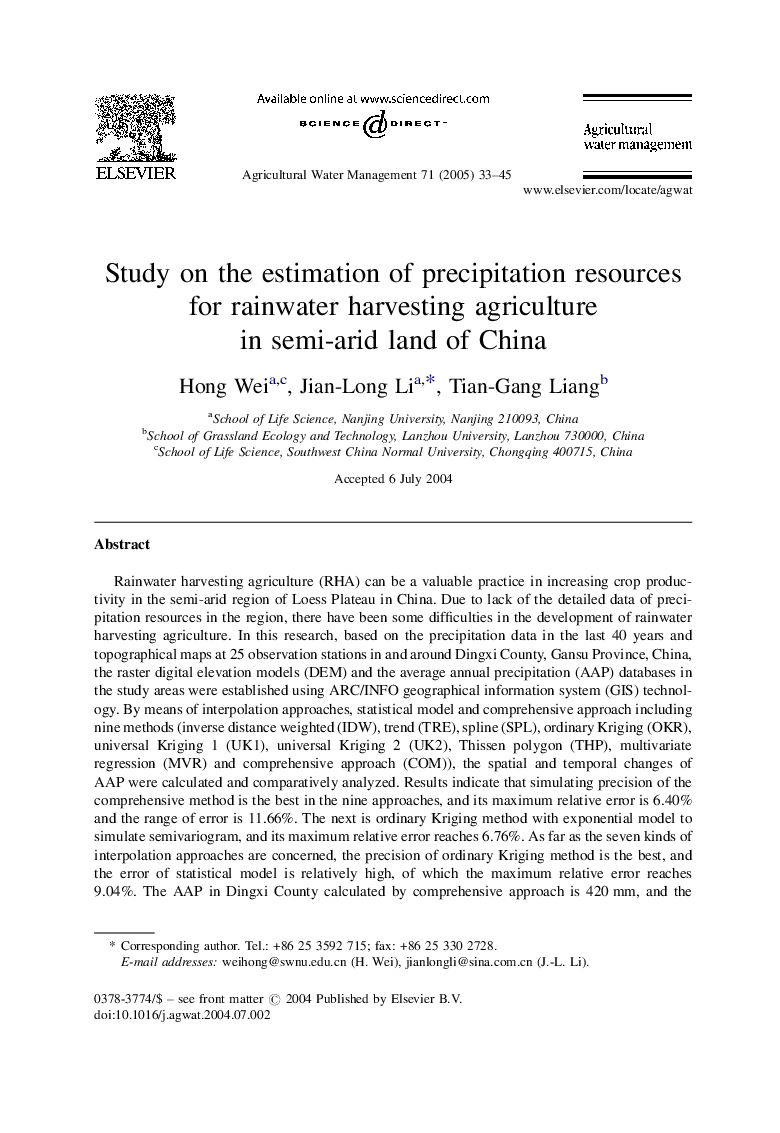| Article ID | Journal | Published Year | Pages | File Type |
|---|---|---|---|---|
| 9467450 | Agricultural Water Management | 2005 | 13 Pages |
Abstract
Rainwater harvesting agriculture (RHA) can be a valuable practice in increasing crop productivity in the semi-arid region of Loess Plateau in China. Due to lack of the detailed data of precipitation resources in the region, there have been some difficulties in the development of rainwater harvesting agriculture. In this research, based on the precipitation data in the last 40 years and topographical maps at 25 observation stations in and around Dingxi County, Gansu Province, China, the raster digital elevation models (DEM) and the average annual precipitation (AAP) databases in the study areas were established using ARC/INFO geographical information system (GIS) technology. By means of interpolation approaches, statistical model and comprehensive approach including nine methods (inverse distance weighted (IDW), trend (TRE), spline (SPL), ordinary Kriging (OKR), universal Kriging 1 (UK1), universal Kriging 2 (UK2), Thissen polygon (THP), multivariate regression (MVR) and comprehensive approach (COM)), the spatial and temporal changes of AAP were calculated and comparatively analyzed. Results indicate that simulating precision of the comprehensive method is the best in the nine approaches, and its maximum relative error is 6.40% and the range of error is 11.66%. The next is ordinary Kriging method with exponential model to simulate semivariogram, and its maximum relative error reaches 6.76%. As far as the seven kinds of interpolation approaches are concerned, the precision of ordinary Kriging method is the best, and the error of statistical model is relatively high, of which the maximum relative error reaches 9.04%. The AAP in Dingxi County calculated by comprehensive approach is 420Â mm, and the water deficit of spring wheat is about 226Â mm, so rainwater harvesting agriculture is feasible in the study area if reasonable harvesting technologies are taken. The AAP information system, established by raster precipitation spatial databases using optimized methods, can quickly and timely calculate the total quantities and the spatial changes of precipitation resources on any scales in the study areas, which has an important role in runoff simulating, engineering planning, strategy developing, and decision making as well as water management in rainwater harvesting agriculture.
Related Topics
Life Sciences
Agricultural and Biological Sciences
Agronomy and Crop Science
Authors
Hong Wei, Jian-Long Li, Tian-Gang Liang,
